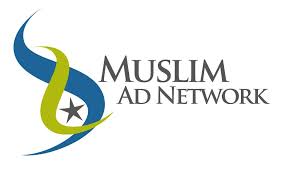
As Eid ul Adha approaches, brands have a unique opportunity to connect with Muslim audiences in a meaningful and impactful way. Eid ul Adha, also known as the “Festival of Sacrifice,” is one of the most significant holidays in the Islamic calendar, commemorating the willingness of Ibrahim (AS) to sacrifice his son as an act of obedience to Allah SWT. For brands, this is a time to create marketing campaigns that resonate deeply with the values and traditions associated with this festive period.
Understanding the Importance of Eid ul Adha
Eid ul Adha is celebrated by Muslims worldwide, marking the end of Hajj, the annual pilgrimage to Makkah. The festival emphasizes sacrifice, charity, and community, with traditions that include prayer, feasting, and the distribution of meat to the less fortunate. According to a Pew Research Center report, the global Muslim population is expected to reach 2.2 billion by 2030, making up nearly a quarter of the world’s population. This demographic represents a significant and growing market for brands to engage with.
Key Components of an Effective Eid ul Adha Marketing Campaign
1. Cultural Sensitivity and Authenticity
- Understanding Traditions: Incorporate elements that reflect the spirit of Eid ul Adha, such as themes of sacrifice, gratitude, and community. Authentic representation is crucial; avoid stereotypes and ensure your messaging respects Islamic values. As noted in our article on Eid marketing and advertising, campaigns that respect and understand these traditions tend to resonate more deeply with Muslim audiences.
- Collaborate with Muslim Creators: Partnering with Muslim influencers or content creators can help ensure your campaign resonates with the target audience. Their insights and authenticity can bridge the gap between the brand and the community.
2. Tailored Product Offerings
- Special Edition Products: Consider launching limited-edition products or Eid-themed packaging. For example, Halal-certified food items, festive clothing, or home décor can appeal to those preparing for celebrations.
- Discounts and Promotions: Offer special discounts or bundles that align with Eid gifting traditions. Promotions can be framed around the concept of sharing and giving, which are central to the holiday. The London Eid Festival showcases how significant events can drive sales and brand awareness during this period.
3. Effective Digital Campaigns
- Social Media Engagement: Utilize platforms like Instagram, Facebook, and TikTok to share engaging content. Use hashtags related to Eid ul Adha to increase visibility. According to a Global Web Index report, social media usage among Muslims increases during Ramadan and Eid periods, presenting a prime opportunity for engagement.
- Storytelling: Share stories that highlight the significance of Eid ul Adha and showcase how your brand supports these values. User-generated content, such as sharing customer stories or experiences, can enhance authenticity and connection. This article on Eid ad campaigns versus Christmas ad campaigns highlights the importance of culturally relevant storytelling in creating successful campaigns.
4. Community Involvement and CSR
- Charitable Initiatives: Launch campaigns that include a charity component, such as donating a portion of sales to organizations supporting those in need. This aligns with the spirit of Eid ul Adha and can enhance brand perception.
- Local Community Events: Sponsor or participate in local events or virtual gatherings celebrating Eid. This shows a commitment to the community and helps build brand loyalty. For example, the Eid ul Adha adverts by mainstream companies illustrate how major brands have successfully integrated community-focused initiatives in their campaigns.
Influencer Partnership Examples
Partnering with Muslim influencers can significantly enhance your campaign by ensuring authenticity and deeper engagement with your target audience. Here are some notable Muslim influencers from various niches who could be valuable partners:
- Dina Torkia (Dina Tokio): A prominent figure in modest fashion, known for her stylish hijab tutorials and fashion advice.
- Ascia Al Faraj: A Kuwaiti-American influencer with a chic fashion sense and vibrant lifestyle content.
- Nabela Noor: A beauty influencer who focuses on self-love and inclusivity, with a significant following.
- Sabrina Ghayour: A British-Iranian chef and food writer, her culinary expertise and recipes resonate well with the Muslim community.
Measuring Success
To ensure your Eid ul Adha marketing campaign is effective, track key performance indicators (KPIs) such as:
- Engagement Rates: Monitor social media interactions, likes, shares, and comments.
- Sales Metrics: Analyze sales data, focusing on the impact of promotions and special offers.
- Customer Feedback: Collect feedback through surveys or direct customer interactions to gauge satisfaction and areas for improvement.
Conclusion
Creating an effective marketing campaign for Eid ul Adha requires a deep understanding of the holiday’s significance and the values it represents. By approaching your campaign with cultural sensitivity, tailored offerings, engaging digital content, and a focus on community involvement, your brand can build a meaningful connection with the Muslim audience. As the global Muslim population continues to grow, so does the opportunity for brands to celebrate and honor their traditions, ultimately fostering loyalty and driving business success. For further inspiration, consider exploring more ad ideas for Eid ul Adha, which provide a range of creative and effective strategies.
Ready to take your Eid ul Adha marketing campaign to the next level? Contact Muslim Ad Network today to collaborate with experts who understand the nuances of the Muslim market and can help you craft a campaign that truly resonates. Click here to learn more and get started.
